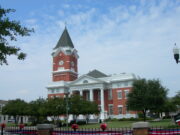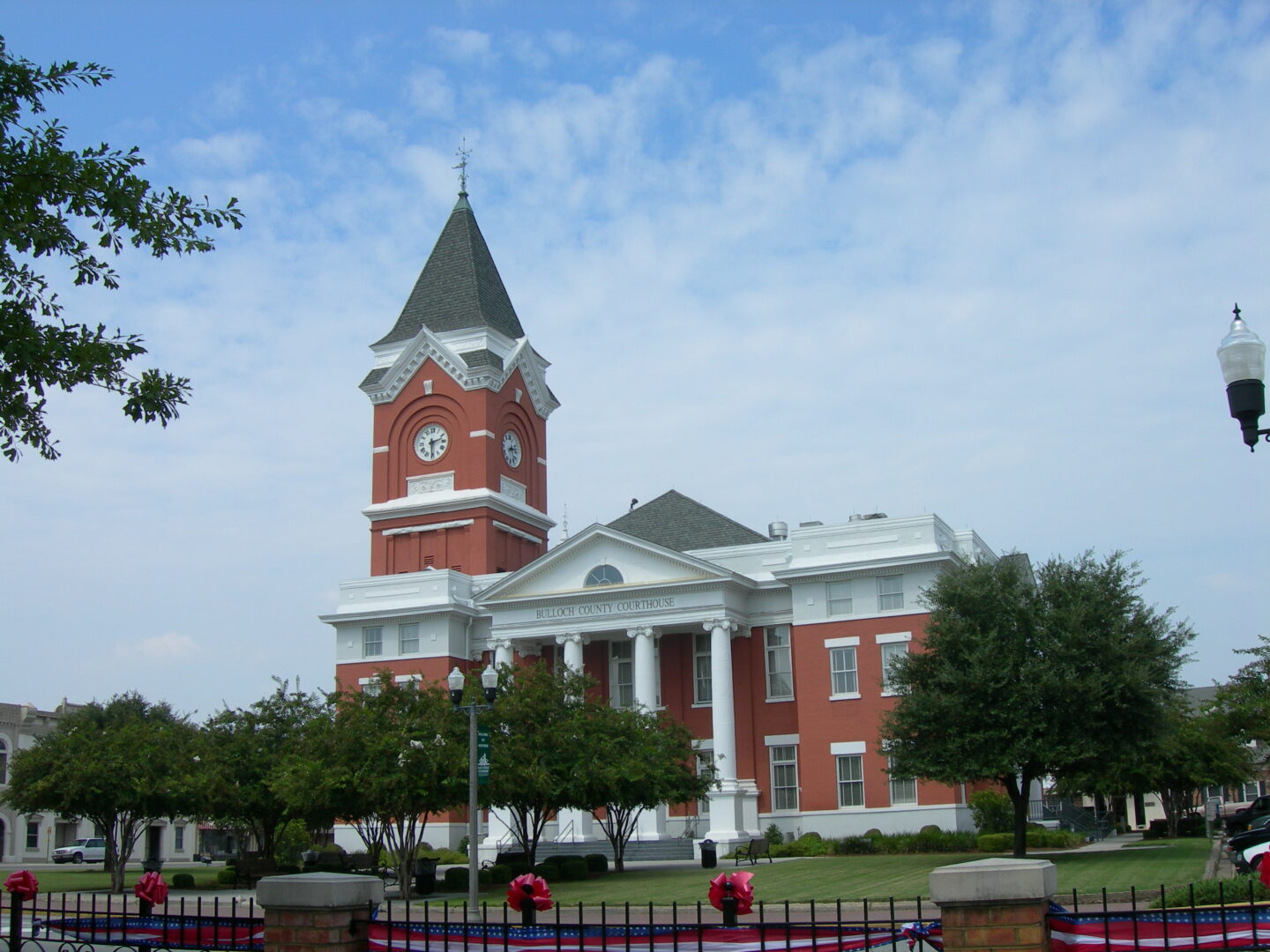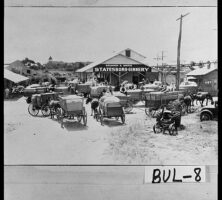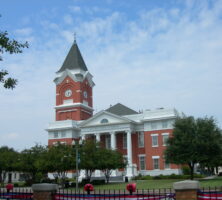Bulloch County quickly began to attract settlers and develop a promising agricultural economy after it was established in 1796. In its early years it was a county without a city or town. Many small farmers and a few planters settled the rich acreage near the Ogeechee River valley on the Old River Road.
Much of the interior of the county consisted of pine forests and rolling sandhills. In an act of unexplained generosity in 1801, George Sibbald of Augusta donated 200 acres for a centrally located county seat. More than two years later, in December 1803, the Georgia legislature created the town of Statesborough, some fifty miles northwest of Savannah.
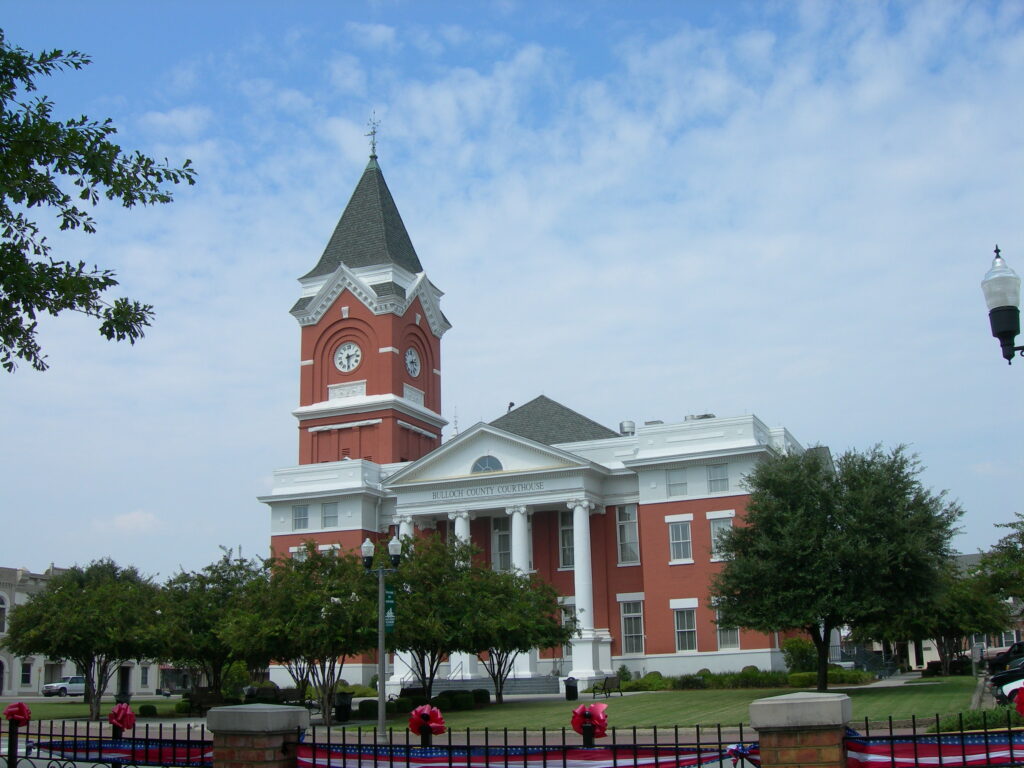
Nineteenth Century
For the next eighty years the town remained small and seemed irrelevant to this rural Cotton Belt county, which was bustling with immigrants whose roots traced to the British Isles. In 1866 the state legislature granted a permanent charter and changed the spelling of the name to its present form, Statesboro, but growth did not follow. The census for 1880 reveals 1,036 residents in the town’s militia district and 8,053 in the growing county. During the next two decades, however, the county seat experienced a period of dramatic expansion. Other communities prospered in the post-Reconstruction economy, but Statesboro emerged as a major town in southeastern Georgia.
In the autumn of 1864, during the Civil War (1861-65), a Union commanding officer on General William T. Sherman’s march to the sea approached a saloon in the middle of a forest in Bulloch County. He asked for directions to Statesboro. The proprietor replied, “You are standing in the middle of town.” The soldiers destroyed only the courthouse—a crude log structure that served as a barn when court was not in session.
Leadership for the town came from outside of Bulloch County. The original visionary was a young lawyer from Bryan County named J. A. Brannen, who moved to Statesboro in 1879. Within a few years a newspaper was started; then local businessmen funded a vital link to the Central of Georgia Railway. Municipal services began to multiply. New stores sprang up along the town’s four major streets, each named Main. Banks quickly followed. Led by enterprising newcomers, Statesboro’s leaders developed a progressive local government and nourished an economy geared to serve the interest of regional farmers.
Twentieth Century
During the first decade of the twentieth century, cotton became king in south Georgia. Statesboro was poised to become the market of choice. In 1908 it led the world in sales of long-staple Sea Island cotton. For each bale of cotton sold in Savannah, ten bales were sold in Statesboro.
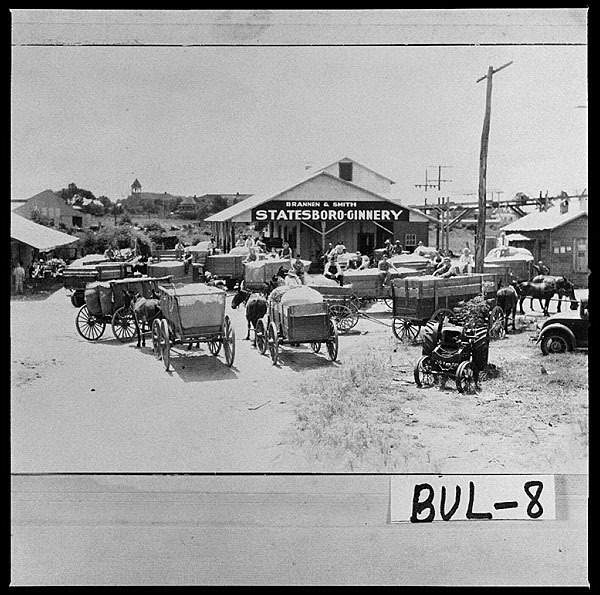
After the boll weevil decimated the cotton crop in the 1930s, local farmers shifted to another cash crop: tobacco. This transition allowed the community to recover from the Great Depression more quickly than most. By 1953 more than 20 million pounds of tobacco passed through warehouses in Statesboro, which was then the largest market in the “bright Tobacco Belt” spanning Georgia and Florida.
Education
The reason Statesboro was able to emerge from its long slumber to become a central town in southeastern Georgia is simple: city and county learned to work in tandem. A notable example is the movement in 1906 to obtain a college. When the state announced it would fund an agricultural and mechanical school in Georgia’s First Congressional District, a Statesboro-Bulloch committee emerged. More than 100 individuals successfully lobbied for Statesboro as the ideal location. Skillfully they outbid several other communities with similar aspirations. Within a few decades the A&M High School became Georgia Teachers College. In 1990 the state designated the institution Georgia Southern University. At the end of the twentieth century it had become a comprehensive regional university serving a diverse residential student body some 15,000 strong. The school reintroduced football in the 1980s. By 2000 the Eagles had captured six national titles in NCAA’s Division I-AA.
In 1989 Ogeechee Technical Institute (later Ogeechee Technical College) opened in Statesboro.
Local observers say that race relations were largely amicable during the twentieth century, though segregation prevailed until the 1960s. Citizens accepted integrated public schools without notable conflict.
Industry
A number of major industries moved to Statesboro during the last decade of the twentieth century. The Wal-Mart Distribution Center is a mammoth structure of 2.2 million square feet—the chain’s largest in the world. Though boosted by manufacturing and service industries, the current economy still depends heavily on agriculture, as taxpayers acknowledged in 2002 when they overwhelmingly approved public funding of an innovative agricultural center. The same referendum also provided revenue to restore historic downtown buildings as a community arts center.
Culture
An important chapter of the city’s cultural history took place on the sidewalks in the 1930s as “Blind Willie” McTell played his twelve-string guitar and sang “The Statesboro Blues,” now an American blues classic. The Statesboro–Georgia Southern Symphony Orchestra has a long history. Georgia Southern University’s museum, botanical garden, and raptor center all focus on serving the public and schools of southeastern Georgia. For decades the campus has been the site of a regional youth arts festival during springtime. The university’s Lane-Nessmith Performing Arts Center hosts touring Broadway shows as well as drama, dance, and other public performances. To celebrate the community’s bicentennial in 2003, the city sponsored a series of outdoor murals, art exhibitions, and musical performances.
According to the 2020 U.S. census, the population of Statesboro is 33,438. With a diverse population and growing economy, Statesboro remains true to its heritage, welcoming and depending on outsiders.


